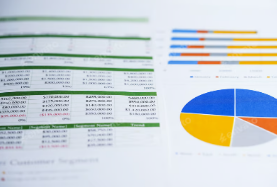Using a spreadsheet can greatly assist in the tax filing process by helping you organize and calculate financial information efficiently. Here are several ways a spreadsheet can streamline your tax preparation:
- Organizing Financial Data: You can create a structured layout to categorize your income, expenses, deductions, and credits. This organization makes it easy to track all relevant financial data in one place, allowing for a comprehensive overview of your financial situation for the tax year.
- Calculating Totals Automatically: Spreadsheets offer built-in functions that can automatically calculate totals, such as sums of income and expenses. This automation reduces the risk of manual errors and saves time, helping you maintain accuracy in your financial reporting.
- Tracking Deductions and Credits: You can set up dedicated sections to record eligible deductions such as business expenses, medical expenses, or charitable contributions. This helps ensure you don’t miss out on potential tax savings and makes it easier to fill out your tax forms accurately.
- Income Tracking: For those with multiple sources of income (e.g., salary, freelance work, investments), you can easily input and categorize each income stream. This helps you consolidate your earnings for the year and simplifies reporting to the tax authorities.
- Expense Management: A spreadsheet allows you to track recurring expenses throughout the year. You can categorize these expenses by type (e.g., utilities, travel, office supplies) for easier reference when determining deductions.
- Estimating Tax Liabilities: By calculating your taxable income (total income minus deductions), you can estimate your tax liability using tax rate tables. This foresight will help you plan accordingly, whether you need to make estimated tax payments or adjust your withholding.
- Maintaining Records: Using a spreadsheet, you can keep digital records of invoices, receipts, and other documentation supporting your income and expenses. This organization simplifies the audit process if required.
- Year-over-Year Comparison: Spreadsheets enable you to track financial data over multiple years, allowing you to compare results. Understanding trends in your income and expenses can assist in tax planning for future years.
- Preparing for Self-Employment Taxes: If you’re self-employed, a spreadsheet can help track quarterly estimated tax payments and differentiate between personal and business expenses, which is crucial for accurate filing.
- Generating Reports: Spreadsheets can generate visual reports like charts and graphs that summarize your financial situation. This visualization can be helpful during tax planning sessions, showing your overall financial health.
Incorporating a spreadsheet into your tax preparation process can lead to greater organization, accuracy, and efficiency. By centralizing all tax-related data, automatically calculating totals, and tracking important deductions, a spreadsheet becomes an invaluable tool for file taxes confidently. Whether you’re an individual taxpayer or a business owner, utilizing this technology can simplify the complexities of tax filing and help ensure compliance with tax regulations.
